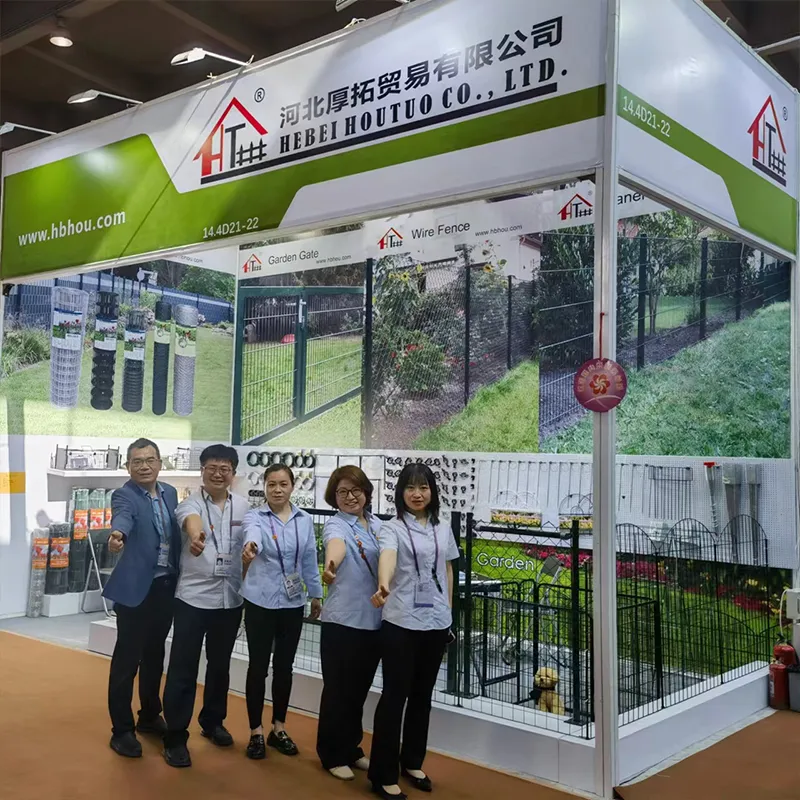The Spiral Design of Gabions Combining Functionality and Aesthetics
Gabions, wire mesh cages filled with rocks or other materials, have been employed for centuries in civil engineering, landscaping, and erosion control. Their practicality and strength have made them a popular choice in various applications, from retaining walls to riverbank stabilization. However, as design trends evolve, innovative approaches such as the spiral gabion have emerged, offering a unique blend of functionality and visual appeal.
The Essence of Gabions
At their core, gabions serve a straightforward purpose they provide stability and erosion control. Traditional gabion structures consist of rectangular cages, usually made from galvanized steel or coated wire, packed with stones or concrete. This design allows for flexibility, as the materials can adapt to the landscape while effectively managing water flow and preventing soil erosion.
The Spiral Design Concept
Introducing the spiral design to gabions takes this traditional concept into an artistic realm. A spiral-shaped gabion can serve multiple functions, marrying aesthetics with utility. This innovative design allows for smoother transitions in landscapes, creating dynamic curves that mimic natural elements found in the environment. The spiral form can be both a retaining wall and a visually striking element in gardens, parks, and urban spaces.
Applications of Spiral Gabions
1. Erosion Control The spiral gabion can be effectively utilized in areas susceptible to erosion, such as riverbanks and hillsides. The unique shape provides greater surface area and stability, allowing for better soil retention and water management compared to traditional straight gabion walls.
2. Landscaping Features With their intriguing visual appeal, spiral gabions can be used as decorative elements in landscaping projects. Garden pathways, terraces, and seating areas can all benefit from their sculptural quality, creating inviting spaces that draw the eye and invite exploration.
gabion spiral

3. Noise Barriers In urban settings, spiral gabions can serve as noise barriers along busy roads or highways. Their dense rock-filled structure can absorb sound, mitigating the impact of traffic noise while simultaneously providing an attractive landscaping feature.
4. Natural Habitat Creation The spaces within spiral gabions can be beneficial for local wildlife. The varied shapes provide niches for plants to grow and create habitats for small animals, promoting biodiversity in urban or suburban settings.
Environmental Considerations
One of the key benefits of using gabions, including spiral designs, lies in their environmental sustainability. They often utilize locally sourced materials, reducing transportation costs and energy consumption. Additionally, using natural stones or recycled materials within the gabion cages minimizes the ecological footprint. The porous structure of gabions allows water to flow through, reducing runoff and promoting groundwater recharge, which is essential for maintaining healthy ecosystems.
Challenges and Considerations
Despite the advantages, there are challenges associated with implementing spiral gabions. The construction process can be more complex than traditional gabion walls, requiring careful planning and skilled labor. Additionally, while the spiral design adds visual interest, it may take up more space than standard rectangular structures, which could be a concern in areas with limited land availability.
Conclusion
The spiral gabion represents a fascinating evolution in the design and application of gabion technology. By merging the practical benefits of traditional gabions with an innovative and eye-catching aesthetic, spiral gabions offer a solution that addresses both functional and visual needs. As we continue to embrace sustainable practices and creative design in landscaping and civil engineering, the spiral gabion stands out as a testament to the harmony of nature and human ingenuity. Its potential for future applications is vast, promising to redefine spaces while protecting our environment for generations to come.
















